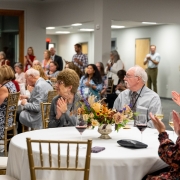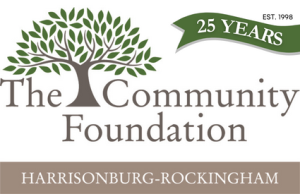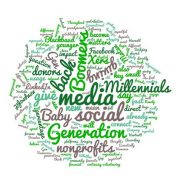The Community Foundation Awards $25,000 to….
The Community Foundation Awards $25,000 to….
Since 1998, twenty-five years ago, The Community Foundation of Harrisonburg and Rockingham County (TCFHR) has been a champion for this community, always thinking of donors’ interests and highlighting area needs. On October 5, TCFHR hosted a celebration for their 25 years of service to the Valley. The evening, set at Explore More Discovery Museum, was filled with joyous conversation and heartening speeches by past and current TCFHR leaders. Donors, professional advisors, partners, board members, past leadership, and staff joined to share our love for the place we call home.
In honor of their 25th anniversary, TCFHR announced to nonprofit organizations in the summer that they would award a special $25,000 grant to a selected nonprofit. Nonprofits who applied to TCFHR’s Giving Back application would be considered. The event committee reviewed 66 worthy applications and selected nine for the full TCFHR Board to consider. The Board then selected the three finalists. It was then the event attendees’ turn to decide. Attendees were integral to the festivities, as they would determine the nonprofit awardee of a $25,000 grant by an anonymous ballot vote.
As the event ended, TCFHR staff announced the nonprofit that received the most votes and would accept the $25,000 award. With a drum roll, TCFHR announced to the group that First Step: A Response to Domestic Violence, Inc. would receive $25,000 towards their project, Emergency Crisis Intervention and Advocacy Services for Survivors of Domestic Violence. At 6:59 PM, Candy Phillips, First Step Executive Director, answered the call. On speakerphone with the audience, Candy heard as the attendees applauded. “We appreciate this. This really means a lot to First Step and everybody here and everyone that we serve. Thank you so much!” – Candy Phillips, on speakerphone.
The Community Foundation would like to thank all their partners for an incredible 25 years. It is an honor and absolute privilege to serve this community, and we appreciate your continued support. Additionally, thank you to Explore More Discovery Museum for providing a beautiful space for our event. THANK YOU!
About The Community Foundation of Harrisonburg & Rockingham County
The Community Foundation of Harrisonburg and Rockingham County makes it easy to give back to the community we love.
###








